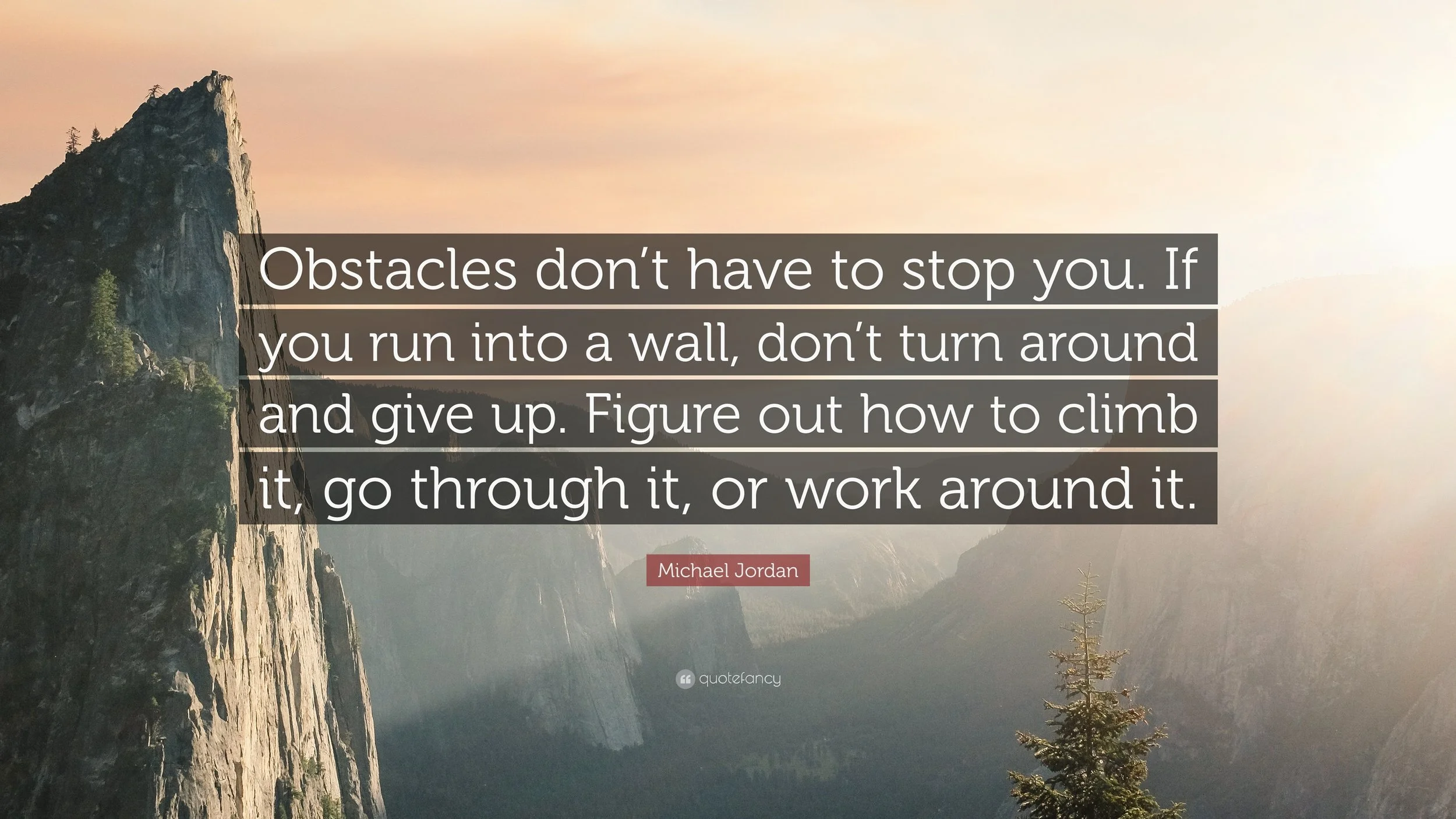Climbing Walls: Leadership Lessons from Michael Jordan
How many of you have watched the movie The Shawshank Redemption? It is a classic movie with some lessons that can be applied to the lives we each live. One of the key messages, as it applies to my thoughts today, is around never giving up. Even if you can only take small steps, or if all you can do is barely scrape the surface today, make some kind of progress. As I am typing this post, there is one obstacle that I am facing that a few of you know about. There are moments when all I can do is breathe. I just need to make it through the next moment. I cannot look too far ahead, otherwise I get overwhelmed and my mind goes into “doomsday” thinking. Some obstacles currently seem insurmountable.
Michael Jordan got cut from his varsity high school basketball team in his Sophomore year. Yet now his name is synonymous with peak performance, as he dominated the basketball court with raw talent. He possessed an unwavering mindset, a relentless drive to overcome obstacles. In his own words, "Obstacles don't have to stop you. If you run into a wall, don't turn around and give up. Figure out how to climb it, go through it, or work around it." This quote is a profound lesson in patience, leadership, resilience, and the power of a problem-solving mindset.
The "Wall" in Leadership:
In leadership, the "wall" can take many forms:
Market Disruptions: Many of us have seen and experienced unexpected economic downturns or shifts in consumer behavior. For me, I remember the 1970s Oil Embargo, the bursting of the Tech Bubble, the bursting of the Housing Bubble, and the shutdown due to the SARS-CoV-2 (aka COVID-19) virus. There are likely others from my lifetime that my mind has mentally blocked.
Team Conflicts: It is important to understand your team’s dynamics. Look up and read the fable of the frog and the scorpion. That could help you understand the value of understanding unique personality traits and how they can lead to internal disagreements or breakdowns in communication.
Technological Challenges: I have had the privilege of being associated with multiple new or upgraded business systems implementations. The reality with these systems is that change is difficult. When we have become accustomed to our systems behaving in a certain way, and that changes, it creates discomfort. Many organizations and individuals are in a position where they need to adapt to rapid technological change. This causes unease.
Personal Setbacks: Failures, rejections, or moments of doubt. I think we all struggle here. While in the moment, it may be difficult, but items considered “failures” can be reframed as times when the learning was the most intense. The image of a Phoenix arising from its ashes represents what “failure” can truly mean. If we are living, growing, and pursuing excellence, we will experience personal setbacks.
Organizational Resistance: Overcoming the "that's how we've always done it" mentality. Technological challenges, as mentioned above, are not the only things that create new experiences. Sometimes, business processes have to change, new leadership shows up and has new ideas for efficiencies, or a myriad of other hiccups occur in the organization that require change. Change is hard; there is a reason that there is a whole mindset and industry around Organization Change Management.
These walls or obstacles can feel insurmountable, tempting us to retreat or abandon our goals. As Jordan’s quote attests, the true test of leadership lies in how we respond to these challenges.
Climbing, Going Through, or Working Around:
Climb It:
Learn and grow, acquire new skills, build on existing areas of expertise, seek a mentor or coach, and explore new ways to apply your skills.
Go Through It:
Do not discount the power of perseverance and determination. Push through adversity, stay focused on the goal, and maintain a resilient mindset. Have the courage to face challenges head-on. Remember, sometimes a little morale boost from a friend can make a big difference.
Working Around It:
Discern if adaptability and strategic thinking will help. Find alternative paths, explore new opportunities, and leverage creative solutions. Keep in mind, there could be a need for flexibility in the face of adversity.
Applying this to Leadership:
Cultivating a Problem-Solving Culture: When you have a team that is comfortable seeing challenges as opportunities for growth, their contributions might be better than something that only one person thought about. Using synergies to support one another often leads to stronger outcomes, so long as the leaders help their team overcome “groupthink”.
Empowering Teams: As a leader, are you providing or finding ways to equip your teams with the tools, resources, and autonomy to overcome obstacles? What can you remove from their path or routine to open creative thinking?
Leading with Resilience: Resilience is often learned by watching others successfully navigate struggles. As a leader, strive to demonstrate a positive and determined attitude in the face of adversities.
Encouraging Innovation: Ask leading questions, one at a time, and let those you lead come up with solutions. Help them think in ways that may seem a bit “out there”. Explore new solutions.
Beyond the Wall:
Overcoming obstacles isn't just about reaching a destination; there is a lot about the journey that makes your team successful. It's about the lessons learned, the skills developed, and the character built along the way. By embracing this philosophy, leaders can transform challenges into stepping stones, paving the way for greater success.
Michael Jordan's quote is a powerful reminder that obstacles don't define us; they refine us. As leaders, we have the choice to either surrender or find creative ways to overcome the obstacles. By embracing a problem-solving mindset and cultivating resilience, we can not only climb the walls in our path but also inspire others to do the same.

